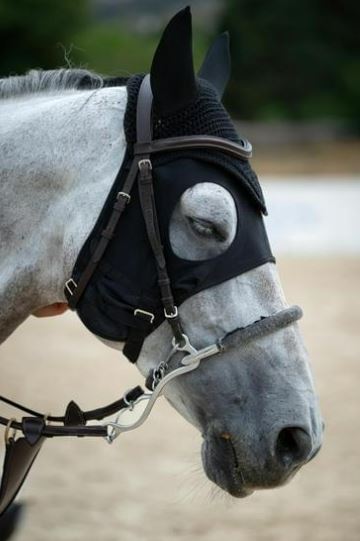On & Off The Bridle Meaning In Horse Racing
If you have just started out in horse racing, you may hear phrases like “on the bridle” and “off the bridle”. Understanding these terms can make watching a race clearer and help you follow how it develops.
In this guide, both phrases are explained without any complicated jargon so you can see how they describe what is happening during a race.
What Is a Bridle?

In horse racing, the bridle is the headgear used by a jockey to guide and communicate with the horse. It includes the bit, the reins and the headstall. The bit rests in the horse’s mouth, the reins are held by the jockey to steer and adjust pace, and the headstall keeps the equipment in place.
This is why the phrases “on the bridle” and “off the bridle” are used. They describe how much effort the jockey is applying through the reins and how the horse is travelling.
If you decide to try your hand betting on horse racing, remember to do so responsibly and within your means; never wager more than you can afford to lose.
What Does On The Bridle Mean In Horse Racing?
“On the bridle” describes a horse travelling comfortably with light signals from the jockey. You may notice the jockey’s hands are still, the reins are held with gentle contact, and the horse’s stride is smooth.
A horse moving on the bridle is often coping well with the pace, the surface and the race distance. Commentators may also say a horse is “travelling well” in this situation.
When you see a horse still on the bridle late in a race, it can suggest that the jockey has the option to ask for more effort.
What Does Off The Bridle Mean In Horse Racing?

“Off the bridle” means the jockey is having to work harder to keep the horse moving. Instead of light contact, you may see hands-and-heels riding, stronger pushes, and in some cases use of the whip in line with British Horseracing Authority (BHA) rules. Current rules limit whip use to six strikes in flat races and seven in jump races. The whip must be used only in certain areas and in a regulated way. Any breaches are reviewed by stewards and can lead to penalties.
A horse can come off the bridle for many reasons. The pace may have lifted, the surface could be testing, the distance may be stretching stamina, or the horse may need reminding to concentrate. It does not always indicate a negative, but it does show that the horse requires active riding at that point.
Example: Coming Off The Bridle
Imagine a mile race turning into the home straight. One horse is still on the bridle with the jockey sitting quietly. Another is asked to move forward: the rider pushes, gathers the reins, and the horse is “shaken up”. That horse has come off the bridle.
From there, outcomes can differ. Some horses respond quickly and keep going strongly. Others may find it harder to sustain the effort, especially if the earlier pace was demanding or the ground is soft. Watching for these changes could potentially help you follow how the race unfolds.
Bet on Horse Racing Online at Bet442
Bet442 provides racecards, form, and prices across UK and international meetings, with an interface designed to make finding and placing your selections straightforward.
We are licensed and regulated by the UK Gambling Commission (UKGC), and we offer safer gambling tools such as deposit limits, time-outs, and reality checks. You must be 18 or over to bet. If you choose to play, set a budget and stick to it.
Join our sports betting site to explore cards, compare the odds, and place your bet with a site that keeps things clear and compliant. Always keep responsible gambling practises in mind.
**The information provided in this blog is intended for educational purposes and should not be construed as betting advice or a guarantee of success. Always gamble responsibly.
*All values (Bet Levels, Maximum Wins etc.) mentioned in relation to these games are subject to change at any time. Game features mentioned may not be available in some jurisdictions.

